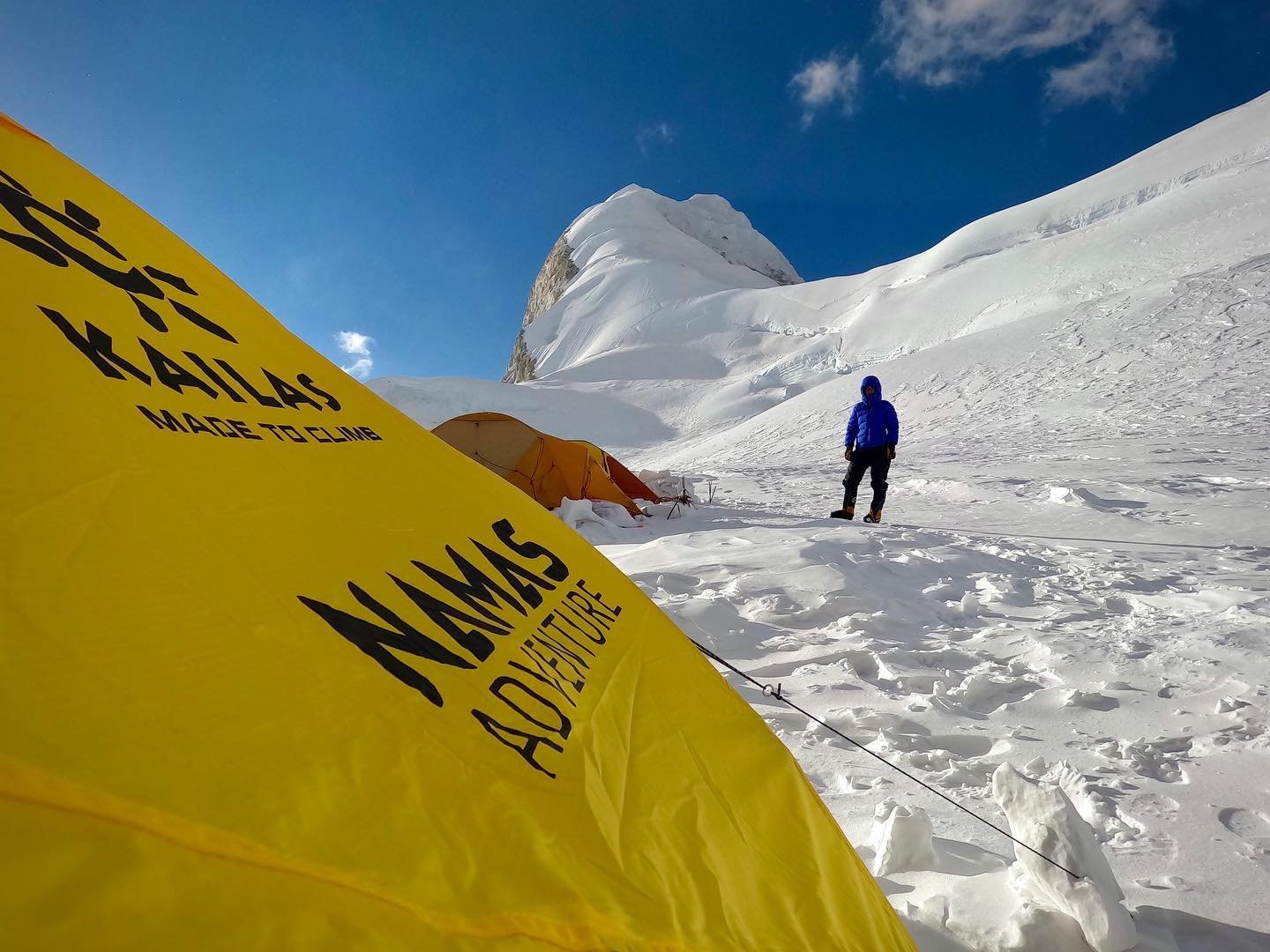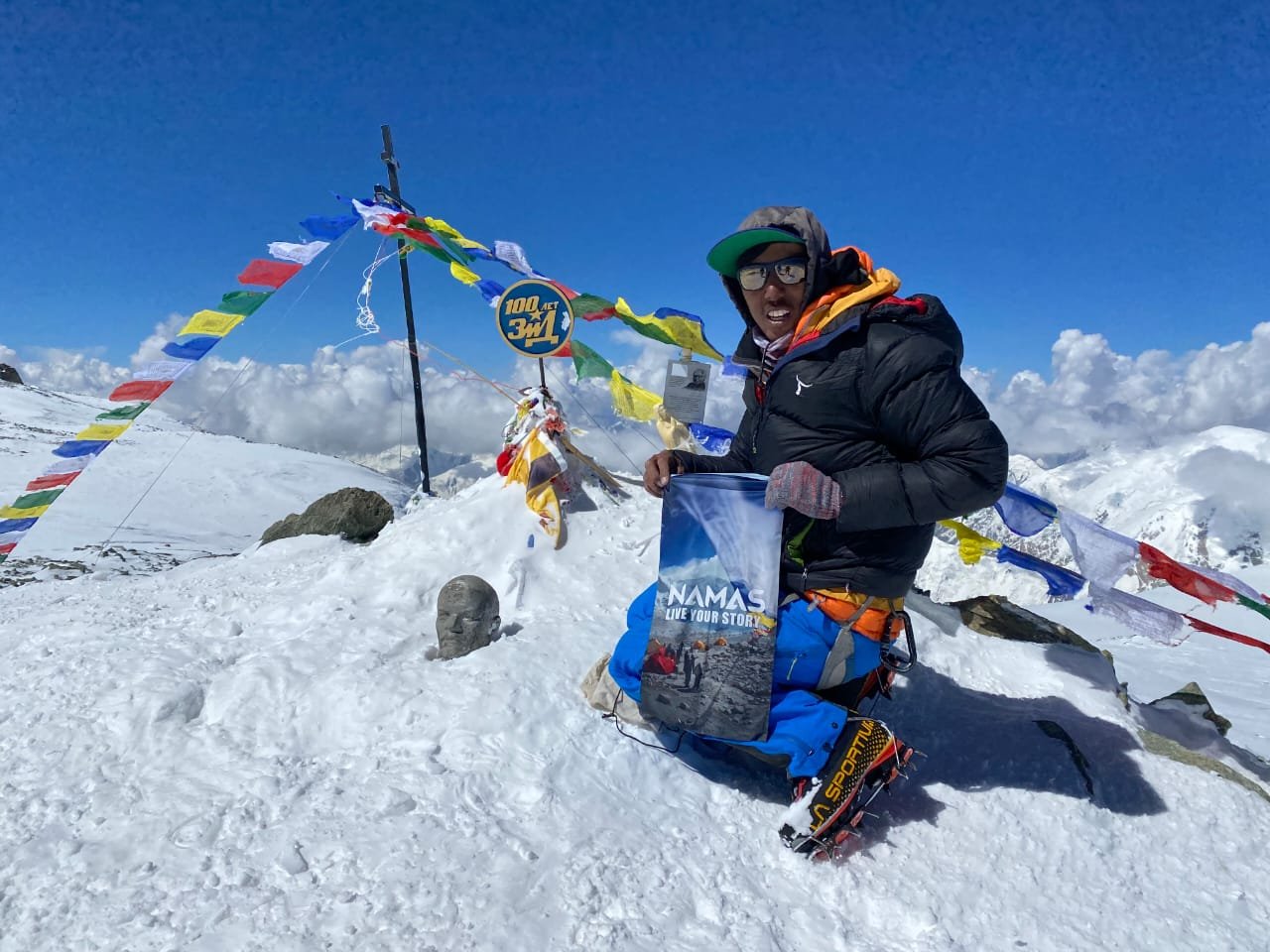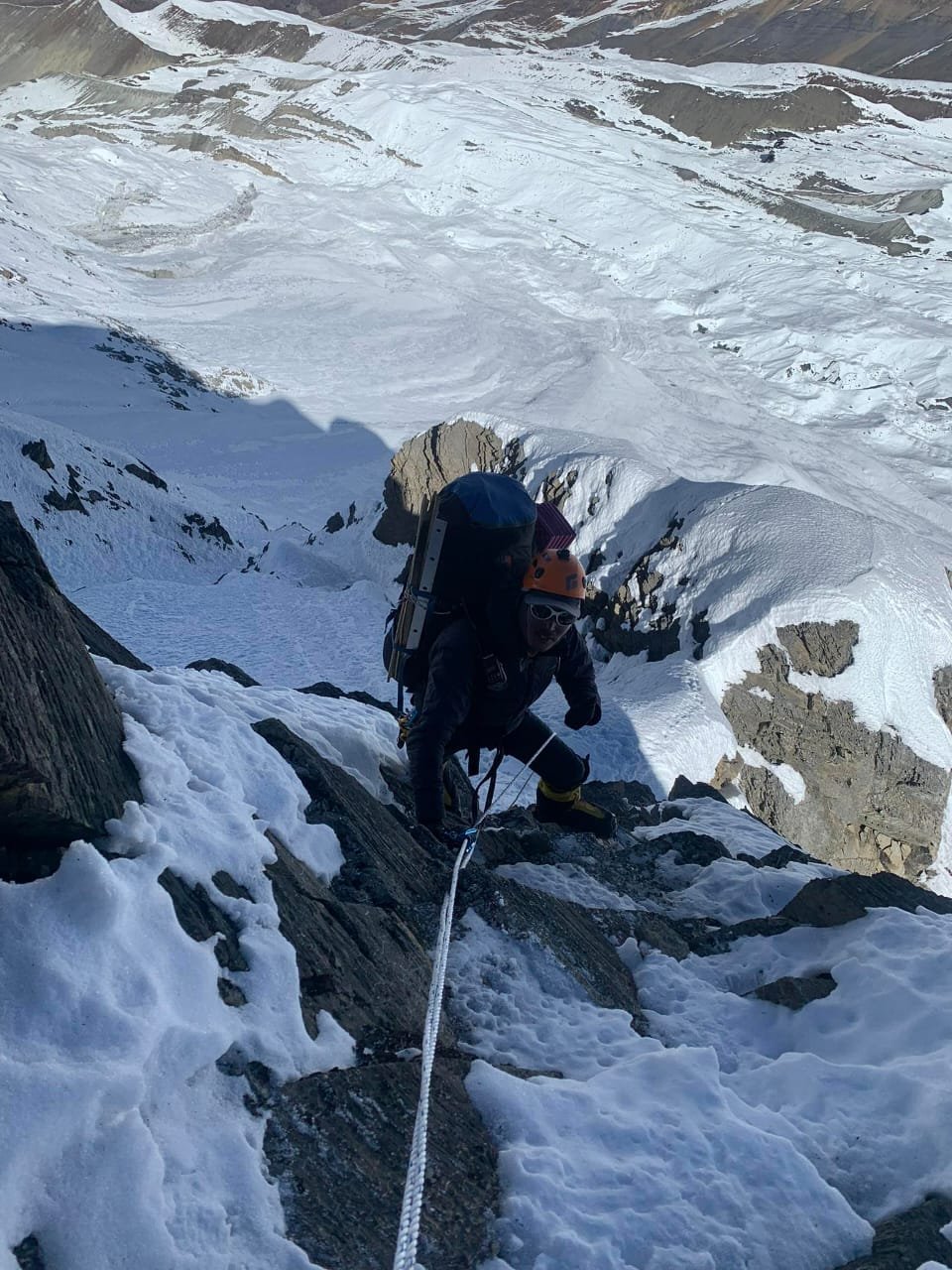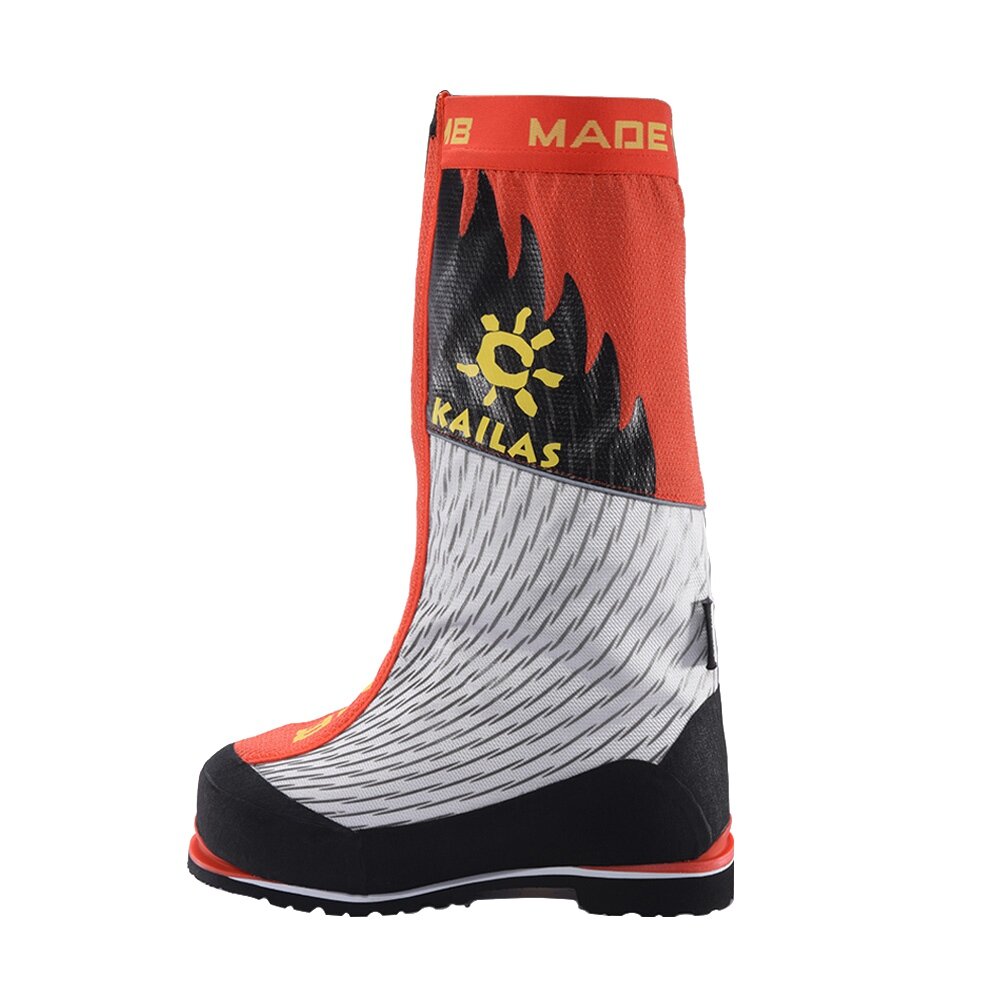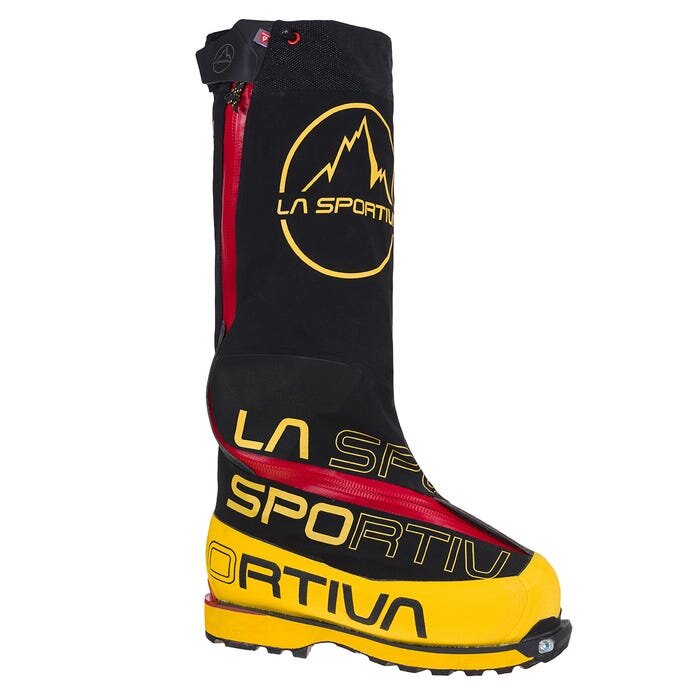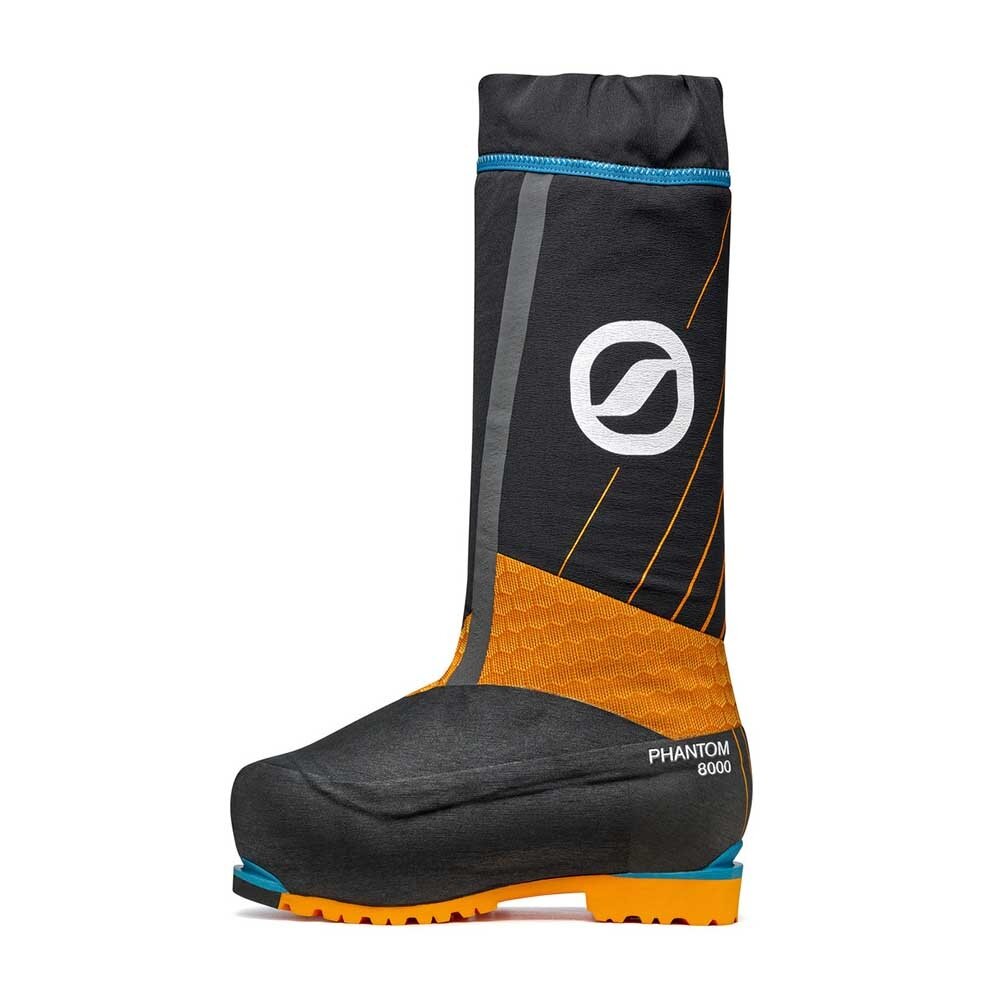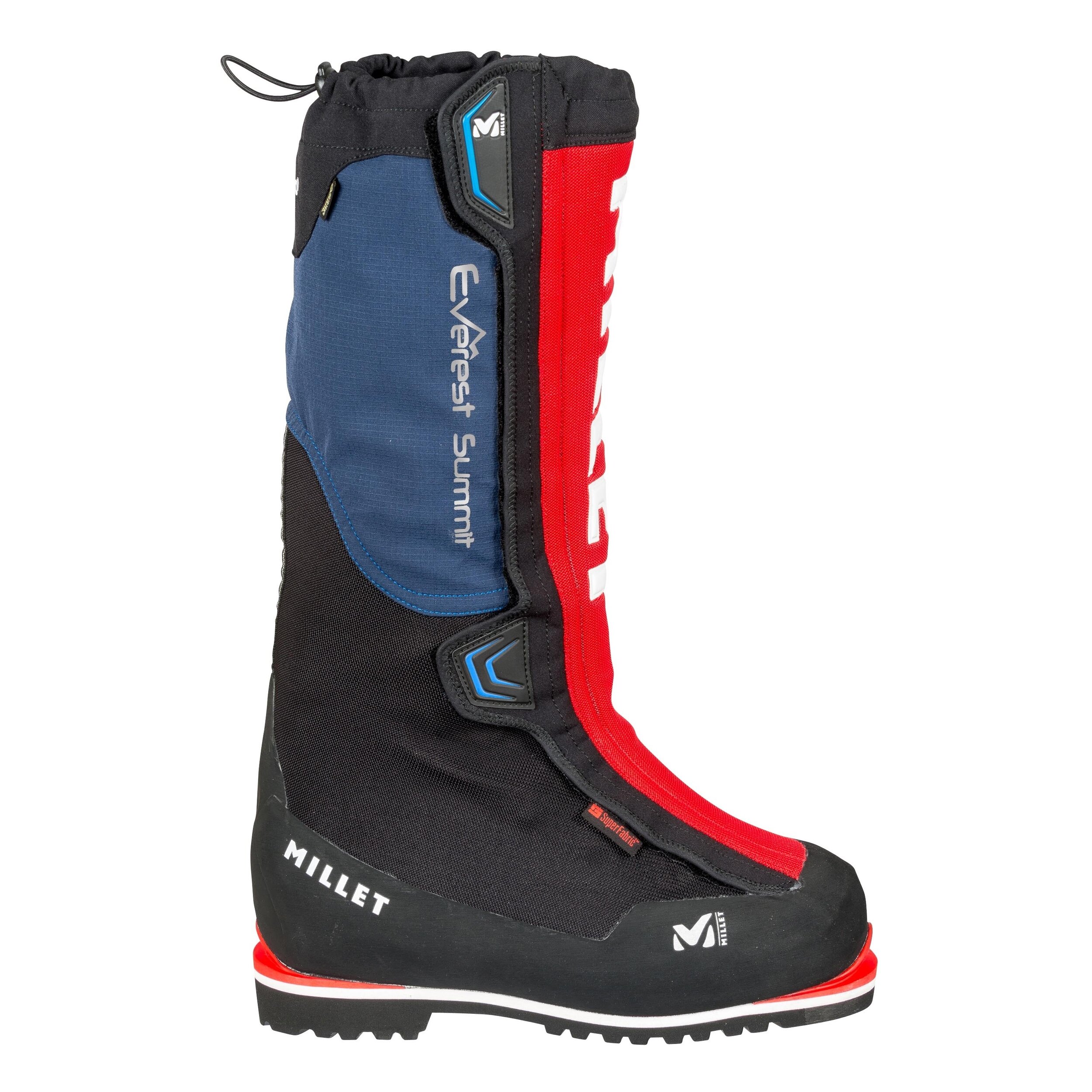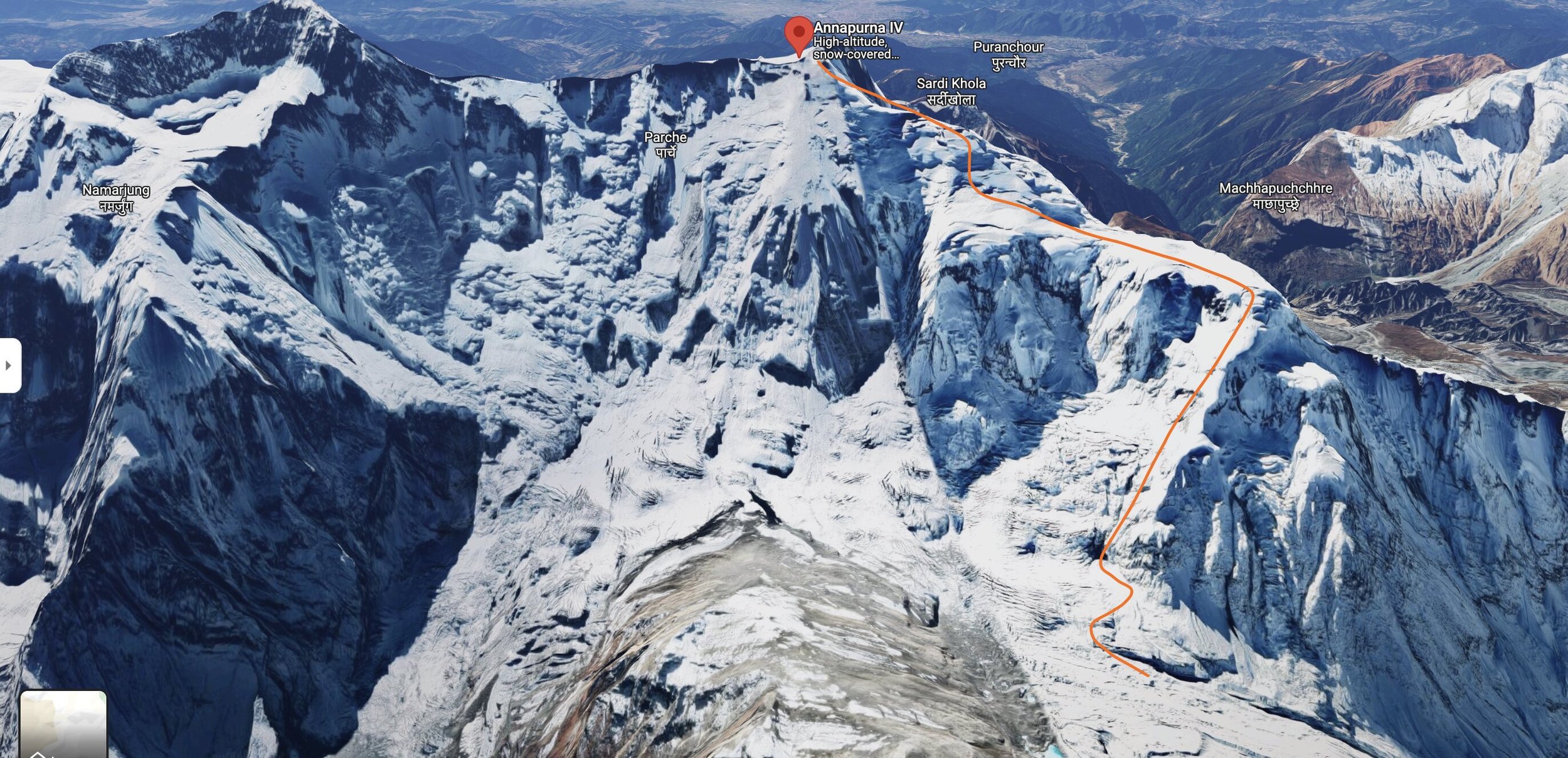Which 7000M mountain peak should I climb? A Guide to Choosing Your next 7000M High-Altitude Adventure: Namas Adventure
With so many amazing options available, it can be difficult to decide which mountain to choose for your next high-altitude expedition. In this blog post, we will provide you with valuable insights and considerations to help you make an informed decision and select the perfect 7000M mountain peak for your climbing aspirations.
The first and foremost is to check your past climbing Experience and Skill Level: Before embarking on any high-altitude expedition, it is crucial to assess your climbing experience and skill level. While 7000M peaks are generally less demanding than their 8000M counterparts, they still require a solid foundation of mountaineering skills and high-altitude experience. Consider factors such as previous high-altitude climbs, technical proficiency, and your ability to adapt to extreme environments.
Easy and Safe - 7000er
Himlung Himal 7126M (Highest summit success in Nepal)
Himlung Himal (7126M) is a classic Himalayan expedition known for being one of the easiest and least technical 7000 meter+ mountains to climb (although it should not be underestimated). It has the highest recorded summit success rate (according to the Himalayan Database) compared to other peaks. Himlung Himal is also renowned as one of the safest climbable peaks with fewer technical difficulties. It is located in the same Himalayan belt as other giants like Manaslu and the Annapurna massif, so you can expect stunning views of the surrounding peaks from the summit.
Expedition Highlights
Elevation: 7126M
Difficulty: 4/PD (Alpine grade link)
High camps: 2 to 3 high camps
15 days of climbing
Considered one of the safest, easiest 7000M+ expeditions with the highest recorded summit success in Nepal
Towering at 7,134 meters along the border between Kyrgyzstan and Tajikistan, Lenin Peak presents an excellent introduction to high-altitude mountaineering above 7,000 meters. Considered one of the more straightforward ascents at this elevation range, it serves as ideal preparation for attempting the Himalayan giants to 7500M or 8,000-meter peaks.
Also named Pik Lenin, this expedition begins in the ancient city of Osh in southern Kyrgyzstan, which radiates a palpable sense of history as the country's second-largest city and oldest continuously inhabited settlement. Home to approximately 250,000 residents, Osh's diverse blend of Uzbeks, Kyrgyz, Russians, and Tajiks infuses the architecture, language, and cuisine with rich cultural elements. Much as it did 3,000 years ago along the Silk Road, Osh still serves as a thriving trading hub connecting Central Asia and China. This gateway city marks the start of the journey before venturing into the high mountains.
Expedition Highlights
Elevation: 7134M
Preparatory climb for 7500M or lower 8000M peaks
One of the least technical 7000M mountain
Difficulty: AD/ 4 (Alpine grade link)
High camps: 3 high camps
Can be your first 7000M+ expedition
Mount Nun is the preeminent peak within the Nun Kun massif situated in the mighty Zanskar Range of the Indian Himalayas. This iconic mountain range, nestled in the Leh Ladakh region, contains two eminent peaks: the lofty Mount Nun at 7,135 meters, the highest summit in the area, and its slightly shorter companion, Mount Kun at 7,077 meters.
A successful ascent of Mount Nun presents ambitious climbers with a prime opportunity to garner invaluable high-altitude mountaineering skills on a classic Himalayan expedition, paving the way for future ascents of even more demanding 7,500 meter or 8,000 meter giants.
Expedition Highlights
Elevation: 7135M
Difficulty: AD/4 (Alpine grade link)
High camps: 3 high camps
12 days of climbing
Can be your first 7000M climb
Spantik 7027M, the majestic peak in the Karakoram region. This expedition is considered straightforward and less technical and offers an excellent opportunity to challenge yourself at altitudes above 7,000 meters while immersing in the beauty of the mountain area, its warm-hearted people, and its captivating culture. With a well-organized expedition, Spantik provides an affordable and rewarding climbing experience, making it a fantastic choice for mountaineers seeking both adventure and cultural exploration. Don't miss the chance to conquer this stunning peak and create unforgettable memories in the enchanting Karakoram.
Expedition Highlights
Elevation: 7027 M
Difficulty: AD/4 (Alpine grade link)
High camps: 3 high camps
15 days of climbing
Can be your first 7000M climb
Baruntse Peak is another attainable 7,000-meter summit in the Himalayas. This expedition is slightly technical and challenging climb compared to the above-mentioned expeditions. Situated amongst giants like Lhotse, and Makalu, Baruntse lies embedded within a stunning panorama of jagged Himalayan peaks. Its accessibility provides climbers with an unparalleled opportunity to develop critical mountaineering skills and high-altitude experience to prepare for future ascents of more demanding summits.
Expedition Highlights
Elevation: 7129M
Difficulty: 4/PD (Alpine grade link)
High camps: 2 to 3 high camps
15 days of climbing
Safe, challenging, and technical sections. Definitely an epic climb
Technical and Challenging 7000er
Annapurna IV 7525M (Prepare for Everest)
Annapurna IV presents the ideal mountaineering objective for climbers seeking a balance of challenge and relative safety. Part of the mighty Annapurna range in Nepal, Annapurna IV lies between the taller Annapurna II (7,937m) to the west and Annapurna III (7,555m) to the east. The established route up Annapurna IV poses fewer objective hazards and is a relatively semi-technical ascent compared to its neighbors. Of the Annapurna peaks (I, II, III, IV, and Gangapurna), Annapurna IV is considered the least dangerous and technically demanding. Despite its accessible profile, this mountain sees far less traffic than other regional giants. For climbers pursuing a balance of adventure and prudent risk, Annapurna IV stands out as an excellent choice.
Expedition Highlights
Elevation: 7525M
Preparatory climb for Everest or other 8000M expedition
Difficulty: 4/D (Alpine grade link)
High camps: 3 high camps
21 days of climbing
Challenging, and technical expedition. Should not be your first 7000er climb.
Pumori 7161m
Mount Pumori will test climbers' endurance and technical skills, though the rewards overwhelmingly compensate for the required effort. Part of the Mahalangur Himal section of the Himalayan range, Pumori lies between the Nangpa La Pass and Arun River, surrounded by giants like Everest, Lhotse, Makalu and Cho Oyu. Considered a technically demanding expedition, Pumori requires climbers to have sufficient high-altitude experience and fitness. Due to exposed ridges and several avalanche-prone sections, small groups are ill-advised. Instead, an adequately sized team is needed to establish ropes and navigate tricky passages. With relentless steepness testing both physical and mental reserves, Pumori lures only the most determined risk-takers equipped with seasoned technical expertise. For those up for the challenge, Pumori promises immense satisfaction in conquering one of the region's toughest peaks.
Expedition Highlights
Elevation: 7161M
Preparatory climb for Everest or other 8000M expedition
Difficulty: 4/E (Alpine grade link)
High camps: 3 high camps
18 - 20 days of climbing
Challenging, and technical expedition. Should not be your first 7000er climb.
With careful evaluation of your skills, experience, risk tolerance, and personal goals, you can identify the ideal 7000M mountain for your next high-altitude expedition. Do your research, inquire and consult with our team, build up your fitness, prepare your gear, and make sure you join a responsible, skilled team. The thrills of standing atop one of these iconic peaks make all the rigorous training and planning worthwhile. Whichever incredible mountain you choose, cherish and be prepared for a life-changing adventure amid some of the most dramatic landscapes on Earth. With the right preparation and positive mindset, you will return home with memories to last a lifetime.
Let’s welcome you to our yearly departure team and scale to the top of these mountains while making this an epic experience of a lifetime. Our team is ready to hear from you and help you achieve your dream adventure.
Namas Adventure Team
Live Your Story
Everything you need to know about Cho Oyu 8201M Expedition - Namas Adventure
Climbing Cho Oyu (8201m), the world's 6th highest peak, is an incredible opportunity to stand atop one of the “easier” 8000m giants. Located on the Nepal-Tibet border, Cho Oyu offers stunning Himalayan scenery and a chance to glimpse life in Tibet. This complete guide provides everything you need to know to prepare for and succeed on the mighty Cho Oyu.
1. When is the best time to climb Cho Oyu?
The autumn months of September-October are an ideal season for climbing Cho Oyu.
2. How much does the Cho Oyu expedition cost? What does it include? How is Namas operating the expedition differently?
Our Cho Oyu expedition is priced at USD $33,000 per person and includes premium, high-quality all-inclusive peak climbing services. We prioritize safety by implementing a 1:1 guide-to-client ratio with additional Sherpa guides for high-altitude logistics/ rescue missions and the use of 4 X personal supplemental oxygen (highest in the industry). Our team is dedicated to ensuring your safety and making sure your expedition runs smoothly. As a company, we are committed to our core values of responsibility, ethics, and sustainability. With our team, climbers can focus solely on their climbing holiday and the fun times ahead without any worries.
List of what’s included in your booking.
IFMGA/NMA certified Guide leader
$1000 Individual tip pool. (This is not a summit bonus tip) The tip pool will be fairly distributed among all Namas staff members. (Guides, porters, drivers, hotel security, and staff). Guest may personally hand in extra tips to our guides and porters)
Namas Branded merchandise (Down Jacket, Cap, Buff)
1:1 Sherpa/client ratio. Additional Supporting Guides will be allocated based on climbing members’ number.
Head chef and kitchen helpers (Helpers increase with the number in climbing team members)
2 nights before the expedition and 1 day after the expedition. Hotel in Kathmandu. (Should clients return early from their expedition, clients will be responsible for their extra Kathmandu hotel bookings)
All trekking and climbing permits (Chinese government climbing permits)
All internal-local transportation to and from the trekking trail head. Tibet and Kathmandu
Flights Lhasha - Kathmandu - Lhasha
Expedition tents, single tents in Base Camps and shared in higher camps Brands Salewa, Mountain Hardwear, Samaya equipment, Kailas
4 Oxygen Bottles
60 kgs personal weight
Freezed dried meals during camping days (Chicken, mushroom, vegan options etc)
Chocolate, energy bars, hydration pills, biscuits, canned foods, nuts
Burners and expedition equipment
Walkie-talkie/ Satellite phone
Breakfast, Lunch, and Dinner on trek and expedition days.
Lodge accommodation during the trek
Porters per guest
Arrival pick up and departure
Basic First aid kit
Welcome/Farewell leave Dinner
4. The first ascent of Cho Oyu 8201M?
Cho Oyu was first summited in 1954 by a small Austrian/Tibetan expedition.
5. How many climbing routes are there to climb Cho Oyu?
There are two main commercial expedition routes in Cho Oyu. The west ridge route is the choice for most expedition companies.
6. Why is Cho Oyu considered easy and safest 8000M expedition?
Cho Oyu stands out as one of the easier and safer 8000m peaks, mainly attributed to its manageable technical difficulty and a camping/climbing route that is less susceptible to avalanches. The post-monsoon period in this region of Tibet-Nepal offers relatively stable weather conditions, resulting in a historically lower fatality rate compared to other peaks above 8000m. The presence of skilled Sherpa guides and the Nepalese climbing system further enhance the safety measures associated with Cho Oyu for high-altitude expeditions.
7. What level of experience and qualifications are required for climbers to safely participate in the Cho Oyu 8201M expedition? Additionally, is it necessary for climbers to be accompanied by professional guides?
Experiences - To participate in the Cho Oyu expedition, a minimum requirement is previous high-altitude climbing experience, including at least two 6000-meter peaks and one 7000-meter peak, such as Himlung Himal, Baruntse, Mt. Nun, or Spantik. It is a must for climbers to have knowledge and experience of long-duration hiking (10+ hours) and climbing using crampons on snow, ice, and steep surfaces, as well as being comfortable and proficient in using fixed ropes on steep and exposed sections. Additionally, it is important for climbers to have a good understanding of climbing gear, basic rope techniques, and the ability to handle cold and windy conditions. Unlike other places, rules in Tibets are strict and clients will have to present proof of certification for the pre-requirements before climbing 8000M peaks.
For those with intermediate experience levels and no previous 7000M+ climbing experience, we highly recommend gaining more experience before attempting this peak. However, for those with deep knowledge of climbing technical peaks and are seasonal alpine climbers, Cho Oyu may be considered. In Tibet, it is essential to experience the local way of doing things, and cultural perspective, bonding with local climbing leaders, and understand their perspective on climbing big mountains. This will give you a wider understanding of the climbing culture in Nepal.
8. What is the number of high camps established for the Cho Oyu expedition?
We will strategically plan 3-4 high camps during our Cho Oyu expedition mission.
Route: West Ridge, Tibet
Advanced Base Camp (5800M/18372FT)
Cho Oyu Camp 1 (6500M/21,325FT)
Cho Oyu Camp 2 (7100M/3,294FT)
Cho Oyu Camp 3 (7400M/24278FT)
Cho Oyu Summit (8201M/27765FT) 12 - 16hrs
9. What is the recommended itinerary for proper acclimatization during the Cho Oyu expedition?
As with all high-altitude expeditions, the principle of "climb high, sleep low" applies. Progressing slowly and steadily is key when climbing extreme high-altitude peaks. During Cho Oyu expedition, we will conduct 2 rotations between Advanced Base Camp, Camp 1, 2, and 3. Proper acclimatization is crucial in order to ensure that the body is well-rested, adapted, and stronger to climb even higher. When undertaking a high-altitude climbing adventure, taking a slow and steady approach is essential for success. Our itineraries have been carefully crafted by our guides, who possess years of climbing and guiding experience.
10. What level of training and experience is required for the Cho Oyu expedition climb? Can you provide guidance on an appropriate training plan?
When planning any high-altitude expeditions, it is essential to be in optimal physical shape, and the Cho Oyu expedition is no exception. A sustained, disciplined training plan should be implemented. You can either follow the training template provided or hire a personal trainer (either online or in-person) to prepare yourself for this expedition. This includes mimicking walking on step-up ladders, similar to those encountered when climbing steep faces at high altitudes.
We highly recommend focusing on endurance, core, and strength training. Aerobic exercises such as long-distance running (50-60Km+) weekly or cycling (100-160Km weekly), and hiking long distances (8 -12 hours) with elevation gain while carrying 15-20kg weights are some of the suggested training methods. Additionally, strength-building and muscle endurance training are crucial. Kettlebell routines are one of the best workouts for this purpose. We advise scheduling your training at least 6-12 months prior to your climbing departure date. More on our training mountain expedition blog.
11. How hard is Cho Oyu How difficult is the climb?
Cho Oyu expedition is graded at D+ /4 in difficulty. (Alpine/Fitness grading link).
It is crucial to emphasize that being in peak physical condition is of the utmost importance before embarking on the expedition. The Cho Oyu climb will require 35-42 days of alpine climbing and will test your physical and mental endurance, fitness, and awareness.
This expedition takes place in a remote location and we have a limited team size of Max 10 climbers.
12. Is this expedition suitable as a preparation for my eventual climb of Mount Everest?
Yes, we strongly recommend that those planning to climb Mount Everest consider the Cho Oyu expedition as a perfect preparatory climb. With the increasing crowd and safety concerns on the Manaslu 8163M expedition, Cho Oyu offers a suitable alternative with a similar level of difficulty and less objective dangers compared to Manaslu (Avalanches especially and the true summit of Manaslu are tougher & technical compared to Cho Oyu)
13. Recommended clothing and gear - boot required for Cho Oyu expedition climb (trekking and mountaineering)? Can I rent gear for Cho Oyu climb?
Proper gear selection is essential for a successful climb. We highly recommend investing in high-quality gear and clothing and paying attention to layering properly for optimal comfort. As temperatures can drop to extreme lows of -20C/-40C at night, it is imperative that you are well-equipped to stay warm. Please check our equipment blog for recommended clothing and gear.
Regarding gear rental in Nepal, we do not recommend it. We understand that purchasing all the necessary gear can be costly, but it is worth the investment in the long run. It is preferable to rent gear from reputable adventure gear companies such as North Face, Mountain Hardware, and Kailas in your home city, rather than relying on potentially subpar gear available for rental in Nepal.
Recommended boots for Cho Oyu Expedition
With better technologies, climbing shoes have improved every year. We highly recommend double-layered boots like Kailas Everest 8000M, La Sportiva Olympus Mons Cube, Scarpa 8000 phantom, Millet Everest summit GTX. It is wise to spend on good mountaineering boots, as so with all the gears that we have mentioned in this post above.
More 8000M boots link here (other media article)
14. What types of foods are available during Cho Oyu Expedition? Is clean water available and how much water intake is recommended? Hydration and nutrition recommendation.
During the Cho Oyu Expedition, a variety of foods will be available to meet the nutritional needs of climbers. At lower elevations, meals will be prepared in local tea houses, while at base camp, our dedicated kitchen staff will provide nourishing and delicious meals. As we ascend to higher altitudes, the body may naturally resist the desire to eat, but it is important to maintain a proper diet and hydration for optimal performance.
Our team will provide packed dried meals as an alternative option and recommend a daily water intake of 4-6 liters. It's essential to stay hydrated throughout the expedition, and we suggest bringing hydration tablets or filtration bottles to ensure clean water is readily available. Additionally, we advise avoiding smoking and alcohol consumption while on the expedition as it can negatively impact performance and acclimatization.
Our guiding leaders may be seen smoking or drinking, but please note that they are experienced professionals and have adapted to these environments differently than recreational climbers.
15. Recommended insurance cover for Cho Oyu 8201M Expedition? Do I need helicopter evacuation to be included in my insurance coverage?
It is essential to have comprehensive travel, evacuation, and medical insurance coverage before embarking on any high-altitude expedition, including Cho Oyu. Unexpected events such as accidents, illnesses, or emergency evacuation can occur at any time, and it is crucial to be prepared for such situations. Our team strongly recommends purchasing insurance that includes coverage for emergency evacuation, search and rescue, and medical expenses. Please make sure to review your insurance policy and ensure that it covers all the activities you will be undertaking during the expedition. We are always here to help you with the process of purchasing or checking your insurance policy. Our recommended Insurance companies (link)
We recommend considering Global Rescue as your insurance provider, as they offer essential comprehensive coverage, which is crucial in the remote and challenging terrain of the Himalayas. Unfortunately, helicopter rescue is not possible in Tibet/China.
16. Next climbing goals after Cho Oyu Expedition?
Upon the successful completion of your Cho Oyu 8201M expedition, you will have gained valuable experience and developed the necessary skills to tackle even greater climbing challenges. We recommend considering an ascent of one of the 8000m peaks, such as Mount Everest 8848M, Mt Everest Express, Makalu 8563M, G2 8035M, or other technically challenging peaks such as Ama Dablam 6812M or Express climb, Cholatse 6440M, or any other peaks around the world as your next climbing goal. Our team can provide guidance and recommendations for these expeditions and help you make your next climbing adventure a reality.
A. Mt. Everest 8848.48 Expedition or Mt. Everest Express (30 Days or less)
The Mt. Everest expedition or Mt. Everest Express expedition is not only one of the most popular but also one of the most well-facilitated expeditions. Upon successfully completing your Cho Oyu climb, climbers should be ready to plan their dream climb to the highest peak in the world. MT. Everest 8848M
Ama Dablam 6810M is a technically demanding climbing goal for many mountaineers, known for its stunning beauty and exposed nature in the Everest region. It is a highly sought-after mountain to climb among mountaineering enthusiasts. We recommend considering climbing Ama Dablam before or after a larger expedition, such as Mount Everest, as it presents a significant mountaineering challenge on its own. Ama Dablam is widely considered a "must-do" for alpinists and mountaineers.
C. Gasherbrum 1 or 2 (G1 or G2 Expedition)
Climb G2 with our team from 2024 Summer.
Don't hesitate to reach out to us with any further questions. You can ask us in the comments below or send an email to bookings@namasadventure.com and our team will respond to you as soon as possible. Remember to take care of yourself and to always strive for greatness. Challenge yourself, dare to do great things, and make your story one worth telling.
Namaste
Namas Adventure Team
Other related articles:
Annapurna IV 7525M expedition: Pre requisite experiences, fitness level, and skills requirement - Namas Adventure
Annapurna IV, Climbing high above camp 2
What type of background and experience should one have before attempting Annapurna IV? What kind of climbing experience is considered sufficient for climbing Annapurna IV?
To undertake a successful ascent of Annapurna IV, individuals must possess a solid foundation in high-altitude mountaineering and alpine-style climbing techniques. This encompasses a high level of proficiency in skills such as scrambling, traversing, and navigating steep and treacherous rocky or icy terrain. Additionally, climbers should be well-versed in the safe and effective use of fixed-line ropes and climbing equipment.
Furthermore, being acclimatized to and comfortable with the cold and harsh mountain conditions prevalent at high altitudes is of utmost importance. It is strongly advised that climbers have prior experience scaling peaks of several 4000M to 6000M elevations, as well as at least one expedition to a 7000-meter that involves technical climbing. This level of experience is crucial for adequately preparing for the challenges inherent in an Annapurna IV expedition.
Climbers with a proven history of successful high-altitude ascents are welcome to consult and undergo an evaluation by our team to assess their eligibility for the Annapurna IV expedition. We encourage climbers to provide us with their climbing portfolio, fitness routines, and expedition plans for a thorough evaluation. While it is important to acknowledge that Annapurna IV is comparatively less prone to objective dangers, it is crucial to recognize that this expedition presents its own set of distinctive challenges and potential hazards. Therefore, it is vital for individuals to be well-prepared and possess the necessary confidence to effectively manage the specific skills and conditions associated with this undertaking.
What are the prerequisites for climbing Annapurna IV?
Two or more 6000M peaks and one 7000M expedition. Lobuche East & Island Peak, Chulu West, Khumbu 3 Peak expeditions, Aconcagua, Himlung Himal, Baruntse (Similar 4000M - 6000M peaks or higher), and multi-pitch climb (rock or ice), rock climbing grade up to 5.9/5.10 (not a must but a bonus)
Individuals considering an ascent of Annapurna IV should possess a robust background in high-altitude climbing, including a track record of successful climbs on several peaks ranging from 4000 to 6000 meters, as well as at least one 7000-meter peak that requires semi-technical to technical climbing skills. Many climbers opt to include Annapurna IV in their mountaineering journey as a stepping stone to more challenging 8000-meter peaks like Mount Everest or K2. It should be noted that Annapurna IV is not a widely popular climb, making it an ideal expedition for those seeking a remote and less crowded alpine climbing experience.
Fitness level - 4
Our Annapurna IV mountain expedition requires participants to meet a fitness level of 4, indicating an exceptional overall fitness level that encompasses the ability to adapt to and acclimatize in high-altitude environments. This entails possessing a high degree of endurance, strength, and mental resilience, as well as the capacity to endure prolonged exposure to extreme weather conditions. Participants must also be prepared for the physical demands of carrying loads weighing between 8-12 kilograms over multiple days. Given the challenging nature of this expedition, previous experience in high-altitude climbing is highly recommended to adequately prepare both mentally and physically for the altitude and terrain challenges.
Preparing for the demanding conditions of Annapurna IV necessitates significant dedication and effort. Achieving the required fitness level requires a focus on developing high levels of endurance and strength.
As a general indicator of the fitness level required, it is recommended that individuals be capable of running a half marathon to a marathon distance or cycling for 5-6 hours. For those who prefer hiking, being able to carry a load of 25 to 30 kilograms and hike for over 6 hours is a suitable benchmark. Completing a triathlon is also a strong indicator of being in peak physical condition. Improving one's VO2 max is crucial.
In addition, implementing a well-rounded strength and muscle endurance training routine is essential. This can be achieved through various approaches, such as engaging in cross-fit sessions, high-intensity interval training (HIIT) sessions, and kettlebell training. It is important to note that such training should be done under the guidance of a professional trainer or coach to ensure it is tailored to the individual's specific needs and goals.
Skills to be learned.
Guides in Nepal will advise you to keep it really simple. So there are five basic skills you must - must know.
Figure 8 knot and how to tie a stopper knot at the end of the rope.
Ascending/jumaring on fixed-line and abseiling with super 8 belay device or ATC descender in multi-pitch sections. You will have to be very very careful and well-rehearsed on abseiling since there is no room for errors when descending. You only get that one chance when coming down so you will have to be super careful. And for safety backup have ‘prusik knot’ tied on the main rope.
Climbing, scrambling, and traversing with crampons on for long-duration on ice, rock, and snow surface.
Multi-pitch climb (rock or ice), rock climbing grade up to 5.9 to 5.10. Indoors or outdoors. (For reference check out our - Alpine grading)
Performing snow arrest and safely getting back up if by any chance climbers slip and slide.
Participating in an Annapurna IV (7525M) expedition requires a solid foundation of previous high-altitude climbing experience and a high level of physical fitness. In addition, possessing advanced skills such as rope techniques, outdoor lead climbing, and ice climbing can greatly enhance your chances of success. If you don't have access to mountains in your local area, focusing on indoor and outdoor rock climbing can help you maintain your skills and fitness levels.
While commercial expeditions typically handle logistics, it is still important to be prepared and have a good understanding of the technical aspects of the climb. Thanks to the expertise and competence of Sherpa guide leaders in Nepal, summit attempts on Annapurna IV have become more attainable. It's worth noting that this expedition is not popular among climbers, and only a few teams will be attempting to climb this mountain. Your team should be prepared to fix ropes to the summit, and all members participating in the expedition must be physically and mentally ready to put in the hard work and push themselves to successfully and safely ascend this 7500-meter peak.
It's important to recognize that the success of an expedition relies on the competence of all team members, from operational management to field guides. Once you have enrolled and possess the necessary skills and experience, it is crucial to commit to a physical training regimen to ensure you are fully prepared for the demands of the expedition.
Let’s go climbing. Live Your Story
Are you ready to take on the magnificent Annapurna IV 7525M in Nepal? If you're eager to take on this breathtaking and demanding peak, and perhaps set your sights even higher on other majestic mountains, the passionate team at Namas Adventure/Expedition is here to make your dream come true! We are thrilled to offer our assistance and answer any questions you may have about the expedition. To get in touch, simply email us at bookings@namasadventure.com or give us a call/WhatsApp at +447446976060. Our dedicated team members are eagerly waiting to help you embark on this incredible journey.
Everything you need to know about Annapurna IV 7525M Expedition - Namas Adventure
1. When is the best time to climb Annapurna IV?
The spring months of March-May and autumn months of September-October are ideal seasons for climbing.
2. How much does the Annapurna IV expedition cost? What does it include? How is Namas operating the expedition differently?
Our Annapurna IV expedition starts from USD $12,950 per person and includes premium, high-quality all-inclusive peak climbing services. We prioritize safety by implementing a 1:1 guide-to-client ratio and the use of personal supplemental oxygen. Our team is dedicated to ensuring your safety and making sure your expedition runs smoothly. As a company, we are committed to our core values of responsibility, ethics, and sustainability. With our team, climbers can focus solely on their climbing holiday and the fun times ahead without any worries.
List of what’s included in your booking.
IFMGA/NNMGA certified Guide leader
$500 Individual tip pool. The tip pool will be fairly distributed among all Namas staff members. (Guides, porters, drivers, hotel security, and staff). Guest may personally hand in extra tips to our guides and porters)
Namas Branded merchandise (800 or 900 Fill Down Jacket, Cap, Buff)
1:1 Sherpa/client ratio. (Additional 1:1 Sherpa can be arranged, extra charges apply)
Head chef and kitchen helpers (Helpers increase with the number in climbing team members)
1X Supplemental Oxygen system
4 start Arrival at hotel in Kathmandu. 2 nights upon arrival and 1 night before departure.
All trekking and climbing permits (Khumbu Region Permit and TIMS)
All internal-local transportation to and from the trekking trailhead
Expedition tents (2 or 1-person tents) Brands Salewa, Mountain Hardwear, Samaya equipment, Kailas
40 kgs personal weight
Freezed dried meals (Chicken, mushroom, vegan options etc) upon request
Chocolate, energy bars, hydration pills, biscuits, canned foods, nuts
Burners and expedition equipment
Walkie-talkie/ Satellite phone/ GPS tracker
Breakfast, Lunch, and Dinner on trek and expedition days.
Lodge accommodation during the trek
Porters per guest
Arrival pick-up and departure
Internal flights
Basic First aid kit
Welcome/Farewell leave Dinner
4. The first ascent of Annapurna IV 7525M?
Annapurna IV was first climbed in 1955 by a German expedition led by Heinz Steinmetz via the North Face and Northwest Ridge.
5. How many climbing routes are there to climb Annapurna IV?
There is one commercial expedition route. North West ridge of the mountain.
6. How many peaks are included in the Annapurna Massif? Additionally, what is the level of difficulty of climbing Annapurna IV (7525M) compared to other peaks in the Annapurna range, and is it considered a safe climb?
It is a fact that Annapurna I (8091M) holds the reputation of being one of the most challenging peaks to climb in the world, with a 29% fatality rate. It is important to note, however, that the Annapurna massif range comprises of 6 distinct peaks, each with its own level of difficulty and inherent risks.
Annapurna I (Main) 8091M/26545ft, Annapurna I (Central) 8051M/26414ft, Annapurna I (East) 8010M/26280ft
Annapurna II 7937M/26040ft
Annapurna III 7555M/24786ft
Annapurna IV 7525M/25688ft
Annapurna South 7219M/23684ft
Annapurna Fang 7647M/25089ft
When compared to the other peaks in the Annapurna massif, 🏔 Annapurna IV (7525M) is considered to be one of the less challenging peaks to climb, with relatively fewer objective hazards present.
7. What level of experience and qualifications are required for climbers to safely participate in the Annapurna IV expedition? Additionally, is it necessary for climbers to be accompanied by professional guides?
Experiences - To participate in the Annapurna IV expedition, a minimum requirement is previous high-altitude climbing experience, including at least two 6000-meter peaks and one easier 7000-meter peak, such as Himlung Himal, Mt. Nun, or Spantik. It is beneficial for climbers to have knowledge and experience of long-duration hiking (10+ hours) and climbing using crampons on snow, ice, and steep surfaces, as well as being comfortable and proficient in using fixed ropes on steep and exposed sections. Additionally, it is important for climbers to have a good understanding of climbing gear, basic rope techniques, and the ability to handle cold and windy conditions.
For those with intermediate experience levels and no previous 7000M and 8000M climbing experience, we highly recommend gaining more experience before attempting this peak. However, for those with deep knowledge of climbing technical peaks and are seasonal alpine climbers, Annapurna IV may be considered. In Nepal, it is essential to experience the local way of doing things, and cultural perspective, bonding with local climbing leaders, and understand their perspective on climbing big mountains. This will give you a wider understanding of the climbing culture in Nepal.
Professional Local Guides - As per Nepalese regulations, guides are mandatory for high-altitude peaks above 6000 meters. To obtain a permit for any major expedition, it must be done through a registered local company. However, for experienced climbers with a wealth of climbing experience, there may be routes that even local guides may not be familiar with. In such cases, it would be wise to consider having a guide as a backup option, even if you plan to explore new routes.
8. What is the number of high camps established for the Annapurna IV expedition?
We will strategically plan 3-4 high camps during our Annapurna IV expedition mission.
Advanced Base camp 5700M
Camp 1 (6200M)
Camp 2 (6650M)
Camp 3 (7470M - 7500M)
Camp 4 Probability
9. What is the recommended itinerary for proper acclimatization during the Annapurna IV expedition?
As with all high-altitude expeditions, the principle of "climb high, sleep low" applies. Progressing slowly and steadily is key when climbing extreme high-altitude peaks. During the Annapurna IV expedition, we will conduct 2 rotations between Base Camp, Camp 1, 2, and 3. Proper acclimatization is crucial in order to ensure that the body is well-rested, adapted, and stronger to climb even higher. When undertaking a high-altitude climbing adventure, taking a slow and steady approach is essential for success. Our itineraries have been carefully crafted by our guides, who possess years of climbing and guiding experience.
10. What level of training and experience is required for the Annapurna IV expedition climb? Can you provide guidance on an appropriate training plan?
When planning any high-altitude expeditions, it is essential to be in optimal physical shape, and the Annapurna IV expedition is no exception. A sustained, disciplined training plan should be implemented. You can either follow the training template provided or hire a personal trainer (either online or in-person) to prepare yourself for this expedition. This includes mimicking walking on step-up ladders, similar to those encountered when climbing steep faces at high altitudes.
We highly recommend focusing on endurance, core, and strength training. Aerobic exercises such as long-distance running (15km+) 3 to 4 times a week, cycling (2-4 hours), and hiking long distances (8 -12 hours) with elevation gain while carrying 15-20kg weights are some of the suggested training methods. Additionally, strength-building and muscle endurance training are crucial. Kettlebell routines are one of the best workouts for this purpose. We advise scheduling your training at least 6-12 months prior to your climbing departure date. More on our training mountain expedition blog.
Personal trainer, ElevationfitnessLA - We have partnered with experienced personal trainers who can help you prepare for your mountaineering projects. One such trainer is Austin from Elevation Fitness LA (email). Austin is a personal trainer based in LA who has a passion for the outdoors and adventure. He has extensive experience in mountaineering, having completed expeditions such as Denali, Ama Dablam, peaks in the Alaska range, the Alps, and the Cascades, as well as being an avid rock climber. With 7 years of experience in the personal training industry, Austin is well-equipped to assist in your training and preparation for your upcoming climbing project.
11. How hard is Annapurna IV? How difficult is it to climb Annapurna IV 7525M?
Annapurna IV expedition is graded at AD+ / 4 in difficulty. (Alpine/Fitness grading link).
It is crucial to emphasize that being in peak physical condition is of the utmost importance before embarking on the expedition. The Annapurna IV climb will require 32 days of alpine climbing and will test your physical and mental endurance, fitness, and awareness.
This expedition takes place in a remote location and has a limited team size. If you are looking for a more secluded and less crowded climbing experience, this is the perfect expedition for you.
12. Is this expedition suitable as a preparation for my eventual climb of Mount Everest?
Yes, we strongly recommend that those planning to climb Mount Everest consider using the Annapurna IV expedition as a preparatory climb. With the increasing crowd and safety concerns on the Manaslu expedition, Annapurna IV offers a suitable alternative with a similar level of difficulty and at a significantly lower cost.
13. Recommended clothing and gear - boot required for Annapurna expedition climb (trekking and mountaineering)? Can I rent gear for Annapurna IV climb?
Proper gear selection is essential for a successful climb. We highly recommend investing in high-quality gear and clothing and paying attention to layering properly for optimal comfort. As temperatures can drop to extreme lows of -20C/-40C at night, it is imperative that you are well-equipped to stay warm. Please check our equipment blog for recommended clothing and gear.
Regarding gear rental in Nepal, we do not recommend it. We understand that purchasing all the necessary gear can be costly, but it is worth the investment in the long run. It is preferable to rent gear from reputable adventure gear companies such as North Face, Mountain Hardware, and Kailas in your home city, rather than relying on potentially subpar gear available for rental in Nepal.
Recommended boots for Annapurna IV Expedition
With better technologies, climbing shoes have improved every year. We highly recommend double-layered boots like Kailas Everest 8000M, La Sportiva Olympus Mons Cube, Scarpa 8000 phantom, Millet Everest summit GTX. It is wise to spend on good mountaineering boots, as so with all the gears that we have mentioned in this post above.
More 8000M boots link here (other media article)
14. What types of foods are available during Annapurna IV Expedition? Is clean water available and how much water intake is recommended? Hydration and nutrition recommendation.
During the Annapurna IV Expedition, a variety of foods will be available to meet the nutritional needs of climbers. At lower elevations, meals will be prepared in local tea houses, while at base camp, our dedicated kitchen staff will provide nourishing and delicious meals. As we ascend to higher altitudes, the body may naturally resist the desire to eat, but it is important to maintain a proper diet and hydration for optimal performance.
Our team will provide packed dried meals as an alternative option and recommend a daily water intake of 4-6 liters. It's essential to stay hydrated throughout the expedition, and we suggest bringing hydration tablets or filtration bottles to ensure clean water is readily available. Additionally, we advise avoiding smoking and alcohol consumption while on the expedition as it can negatively impact performance and acclimatization.
Our guiding leaders may be seen smoking or drinking, but please note that they are experienced professionals and have adapted to these environments differently than recreational climbers.
15. Recommended insurance cover for Annapurna IV 7525M Expedition? Do I need helicopter evacuation to be included in my insurance coverage?
It is essential to have comprehensive travel, evacuation, and medical insurance coverage before embarking on any high-altitude expedition, including Annapurna IV. Unexpected events such as accidents, illnesses, or emergency evacuation can occur at any time, and it is crucial to be prepared for such situations. Our team strongly recommends purchasing insurance that includes coverage for emergency evacuation, search and rescue, and medical expenses. Please make sure to review your insurance policy and ensure that it covers all the activities you will be undertaking during the expedition. We are always here to help you with the process of purchasing or checking your insurance policy. Our recommended Insurance companies (link)
We recommend considering Global Rescue as your insurance provider, as they offer comprehensive coverage that includes helicopter evacuation, which is crucial in the remote and challenging terrain of the Himalayas.
It is important to note that in case of an emergency, our guides will assess your condition and determine the best course of action. However, if helicopter evacuation is deemed necessary, we will contact the insurance company and obtain approval before proceeding. Keep in mind that the cost of evacuation will be your responsibility, but it can be claimed back through your insurance once you return home. Our team in Kathmandu will also provide guidance on the necessary steps to take for a successful claim. It's worth mentioning that there was a scam of helicopter evacuation in Nepal in 2018, so insurance companies are taking extra measures to ensure that the claims are genuine.
16. Next climbing goals after Annapurna IV Expedition?
Upon the successful completion of your Annapurna IV expedition, you will have gained valuable experience and developed the necessary skills to tackle even greater climbing challenges. We recommend considering an ascent of one of the 8000m peaks, such as Mount Everest 8848M, Manaslu 8163M, G2 8035M, or other technically challenging peaks such as Ama Dablam 6812M, Cholatse 6440M, or any other peaks around the world as your next climbing goal. Our team can provide guidance and recommendations for these expeditions and help you make your next climbing adventure a reality.
A. Ama Dablam 6819M and Island Peak 6189M climbing expedition
Ama Dablam 6810M is a technically demanding climbing goal for many mountaineers, known for its stunning beauty and exposed nature in the Everest region. It is a highly sought-after mountain to climb among mountaineering enthusiasts. We recommend considering climbing Ama Dablam before or after a larger expedition, such as Mount Everest, as it presents a significant mountaineering challenge on its own. Ama Dablam is widely considered a "must-do" for alpinists and mountaineers.
B. Mt. Everest 8848.48 Expedition
The Mt. Everest expedition is not only one of the most popular, but also one of the most well-facilitated. Upon successfully completing your climb, we highly recommend exploring other equally challenging and adventurous expeditions that we can provide.
C. Gasherbrum 1 or 2 (G1 or G2 Expedition)
Climb G2 with our team from 2024 Summer.
Don't hesitate to reach out to us with any further questions. You can ask us in the comments below or send an email to bookings@namasadventure.com and our team will respond to you as soon as possible. Remember to take care of yourself and to always strive for greatness. Challenge yourself, dare to do great things, and make your story one worth telling.
Namaste
Namas Adventure Team


